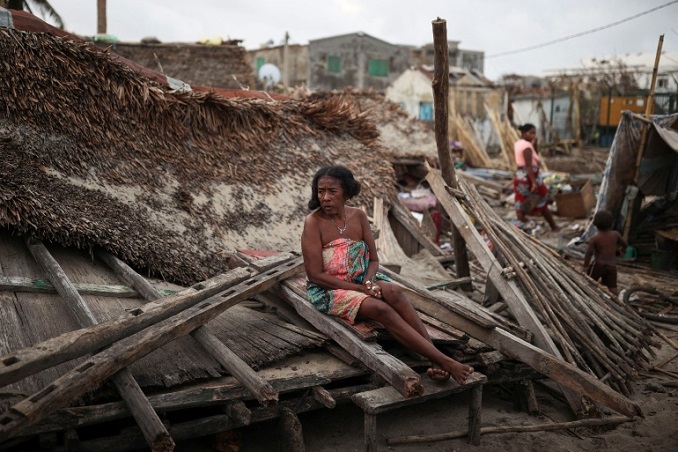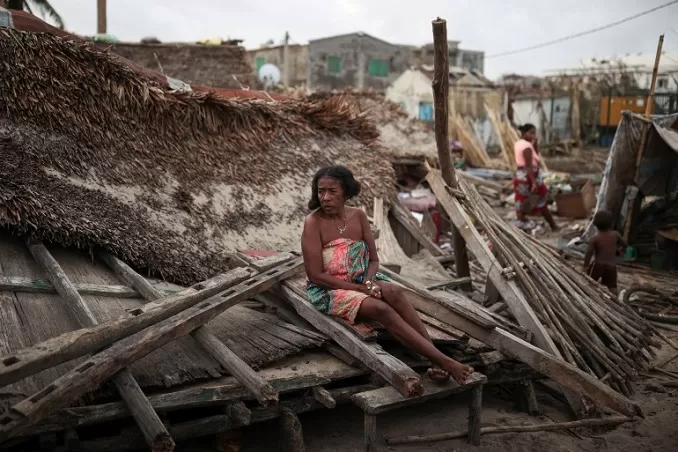

at least 80 people have died in madagascar due to cyclone batsirai
Last updated on February 10th, 2022 at 12:52 pm
![]()
![]()
According to the public body, 60 of the 80 deaths occurred in the region of Ikongo in the island’s east. “It’s a hecatomb here,” district deputy Brunelle Razafintsiandrofa told AFP over the phone, adding that “the majority of the victims were killed as their houses collapsed.” More than 94,000 people have been affected by the torrential rains and high winds, with about 60,000 people having to move. Several NGOs and UN organizations have begun to move resources and staff to help those who have been affected.
The hurricane reached Madagascar on Saturday night, affecting a 150-kilometer stretch of thinly populated and agricultural coastline. It then headed towards the country’s center, wreaking havoc on the country’s “rice granary” by causing rivers to flood onto rice fields, increasing humanitarian concerns. On Monday morning, the island’s harsh weather passed through, sparing the capital, Antananarivo, and the country’s principal port, Tamatave (north-east). Because of this, rescue efforts were made more difficult by the fact that 20 highways and 17 bridges were closed, making it more difficult for people to get help.
According to several officials on the ground, reports are slowly coming in, slowed by the geographical isolation of certain villages and communication challenges. According to the BNGRC, German experts have come to the country, which is among the poorest in the world, to “help the humanitarian response in the Batsirai crossing areas.” The road network is being restored as quickly as feasible.
“Rice fields have been devastated, and rice crops have been lost.” It is the Malagasy people’s principal crop, and their food security will be severely harmed in the next three to six months unless we act quickly,” said Pasqualina DiSirio, the country’s World Food Programme (WFP) director. In Manakara, one of the worst-affected districts, the UN organization has begun giving hot meals. Many NGOs, including Action Against Hunger, Handicap International, Save the Children, and Médecins du Monde, had mobilized in advance of the cyclone, stockpiling supplies and medications. In addition to the government’s aid, they offered food, primary health care, and distribution of cooking equipment, blankets, and hygiene goods to the victims.
The United Nations Children’s Fund (UNICEF) fears that many of the victims are children, who make up more than half of the country’s population of roughly 28 million. Local villagers in Mananjary, the epicenter of the catastrophe, continued to clear their shattered hamlet. Berthine, 22, told AFP earlier this week, “The house has collapsed. We don’t know where to go. We’re looking for food.”
Art has the potential to take the talents from any regions across the globe, and this world has witnessed one…
Thousand of users worldwide face a discontinuation of WhatsApp services on older Android versions as Meta has officially announced this…
Disaster teams in KwaZulu-Natal stand ready to respond to persistent rainfall while drivers should approach roads with care. According to…
Starlink the satellite internet company by Elon Musk is growing fast in Africa. It now works in more than 20…
Chinese production companies directly offer their luxury products at wholesale rates online because they were created for luxury retailers. Social…
Cricket South Africa reveals a new ODI squad for 2023 competitions as Proteas women's team and presents fresh players alongside…
This website uses cookies.